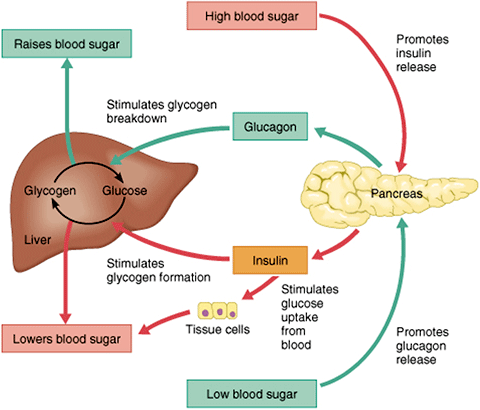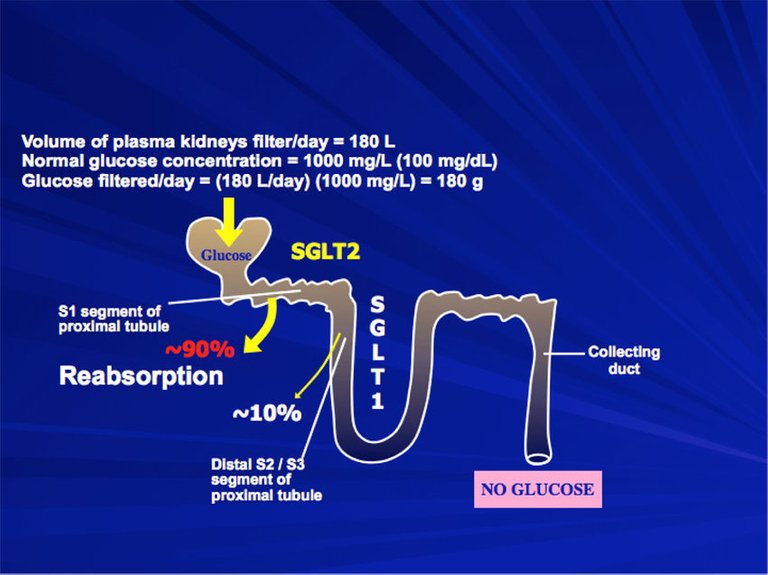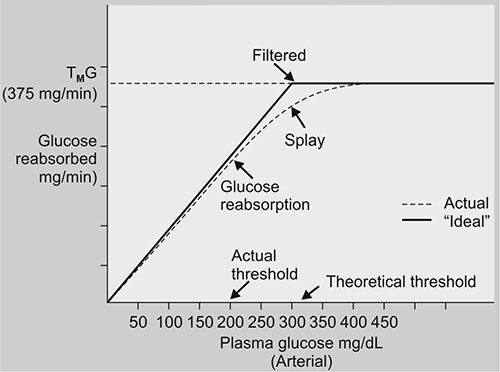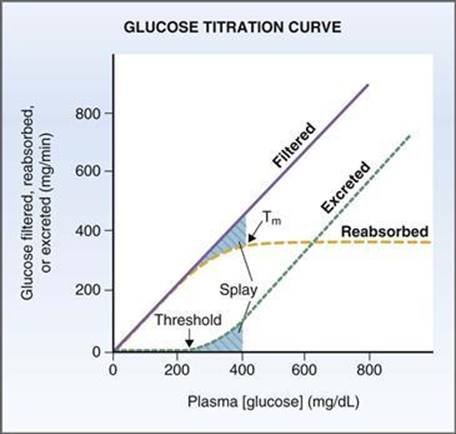Renal- Glycosuria In Diabetes and Splay phenomenon
Firstly, what is Glucose ?
Glucose is a carbohydrate compound meaning it's a source of energy for the living. As you all know, it can be in foods and vegetables we eat to the boxes of chocolates present in the stores. In the human body, all the glucose you eat gets into blood and is measured as blood glucose level (sugar level). [Normal blood sugar level = 60-120 mg/dl]. When Glucose appears in urine it is called "Glycosuria".
So, What happens on too much glucose or increased glucose level (hyperglycemic state)?
Don't you think that blood gets filtered in the kidney and every excess glucose filtered are excreted maintain the blood glucose level ? No, That's not the case. Glucose is excreted but not well enough to maintain normal glucose concentration in blood during hyperglycemic state. Mainly, Glucose homeostasis is maintained by kidney by reabsorbing the filtered glucose to certain amount maintaining the source of energy rather than excreting all which I will make you clear about it .

Glucose level maintenance -Source
Human body has homeostasis mechanism in maintaining the high sugar level. There's an organ Pancreas which is an endocrine hormone, meaning it release hormone directly to bloodstream called "insulin". It maintains the blood glucose by:
- Driving excess glucose to skeletal muscles and into fat tissue for energy source (decrease blood glucose)
- Glycogen, triglycerides synthesis which can be storage form of glucose used in starvation (decrease blood glucose)
- Decreasing other energy source ( decreasing fat breakdown, decreasing glycogen breakdown relativly , low blood glucose)
Apart from this, secretion of glucagon from pancreas and catecholamines which break down fat and glycogen bring glucose up to normal range from lower state (hypoglycemic state). Isn't is amazing ? Either way our body compensates for too high or too low.
Outcomes in Defect of homeostasis ?
Affecting more than 422 million people worldwide, the condition is called " Diabetes mellitus" . Patients have high blood glucose featuring symptoms of polydipsia (excessive drinking), polyuria (excessive urinating) and polyphagia( excessive eating). There are two types of Diabetes which I will be mentioning about it in brief:
DM type 1- Usually occurs in people <30 yrs. Occurs due to self-destruction of pancreatic B-cell (auto-immune cause) and these patients are on life long insulin therapy for maintaining sugar level.
DM type-2- Usually occurs in people >40 yrs. Occurs in resistance to insulin like in obese people who needs more insulin to overcome high sugar level. The insulin level becomes high during the early phase. As it progress, the Beta-cells decrease the ability to produce insulin. These patients are not always treated with insulin as that of type 1 .

Normal glucose absorption in kidney - Source
Why don't kidney maintain the glucose level ?
Kidney plays an important role in excreting unwanted particles and re-absorbing the substance which are useful. In a day, about ~180 gm of glucose is filtered in kidney. Filtered glucose is all absorbed via sodium glucose transporter (SGLUT2) into blood again by active transport meaning this is dependent on cotransporter mechanism. Active transporter present in every cell has maximum transport rate. After further increase in filtered glucose and reaching this maximum transport rate, it cannot reabsorb further into blood and gets deposited and released in urine.

Renal handling of glucose - Source
From the graph, we can say that the transport maximum rate for glucose is ~375 mg/min. This is why glycosuria is seen in diabetes mellitus when excess glucose is present in blood and kidney's reabsorbing capacity has saturated represented by (Bold line) which is a Ideal Curve . But It appears early as ~375 mg/min represented by (dotted line) which is actual curve .When the glucose gets filtered and first starts to appear in urine, it is called as renal threshold for glucose. Its depends on concentration of plasma glucose. For theoretical value, the renal threshold is ~300 mg/dl. When the blood glucose level crosses above 300mg/dl, it appears in urine (ONLY THEORITICAL) . PRACTICALLY, the glucose appears in urine as early as ~300 mg/dl plasma concentration.
So Why glucose reabsorption capacity saturated before 375 mg/min and appearance of urine before 300 mg/dl ? (Splay Phenomenon)
Kidney has about 1.3 million nephrons. Together both kidney has about ~2.6 million nephrons. Nephrons is a function unit of kidney which filters and absorbs products to and fro from blood stream. Each nephron has different handling capacity . Some saturate early and some saturate late i.e (300,275,250,450,400 mg/min) from the theoretical value.
There is bending of curve seen which is called "splay phenomenon". Due to the heterogenicity of nephron, there is different capacity for different neuron. The size of nephron, re-absorptive capacity of nephron (SGLT2) as I mentioned earlier, blood flowing per unit of nephron and how strongly it is attached to co-transporter determines the overall transport maximum rate of glucose. It follows the saturation kinetics. Due to this, Glucose appears early in the urine compared with theoretical value. But, in case of Pregnancy, it's not due to the heterogenicity or less co-transport affinity of glucose for glucose in urine. The body mass is so much increased that circulating blood is increased and there is high blood reaching the kidney. That high blood filtering through kidney also called glomerular filtration rate, the glucose is seen in pregnancy. And it's not pathological or disease condition, it's normal to see small amount glucose in urine.
What's the medical use of the phenomenon ?
SGLUT2 which is a sodium glucose co-transporter transports the glucose in kidney and blood from urine. During the Diabetes mellitus condition, if this channel or transporter gets blocked, the glucose concentration in plasma can be lowered down to normal range. There are certain drugs which have been approved by FDA (Food and Drug Administration) containing the suffix (-flozin) drugs like Dapagliflozin, Canagliflozin and Empagliflozin. These are used in combination with normal drugs metformin. When we block SGLUT 2 transporter, excretion of glucose at plasma concentration of <200 mg/dl occurs result in normal glucose level .
So, this is all for today .Thank you all for reading .
Reference :
FDA approved SGLUT 2 Inhibitors
